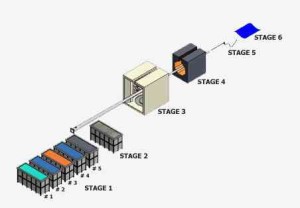 Our optional 10-year finish warranty is for steel poles only — offering the added protection of a galvanized finish.
Our optional 10-year finish warranty is for steel poles only — offering the added protection of a galvanized finish.
For detailed information about what our workmanship and manufacturer’s warranty covers, see Section XI of our Terms and Conditions of Sale.
The overall success of our state-of-the-art finish depends entirely on the quality of the product at the beginning of the process. Prior to galvanizing, surface imperfections such as sharp fins and edges, weld spatter, or burning slag are removed. Once all visual imperfections have been addressed, the piece is sent to the five-step surface preparation necessary for galvanizing. This process ensures that the surface of the steel is completely free of any oxides or other contaminants that might inhibit the reaction of the iron and liquid zinc in the galvanizing kettle.
We use the hot-dip form of galvanization. This is the process of coating the steel with a thin layer of zinc. The pole is “dipped” into a molten bath of zinc at a temperature of approximately 860°F. When exposed to the atmosphere, the pure zinc reacts with oxygen to form zinc oxide, which further reacts with carbon dioxide to form zinc carbonate. Zinc carbonate is dull grey in appearance. The value of galvanizing stems from the relative corrosion resistance of zinc. The effect is that the zinc is consumed first as a sacrificial anode, so it cathodically protects the exposed steel. This means that in case of scratches through the zinc coating, the exposed steel will be cathodically protected by the surrounding zinc coating. Once the pole has been galvanized, it is preheated and mechanically etched. See stages 3 – 7 for additional process for paint over galvanized finish.
In this stage, the pole is coated with iron phosphate, which creates an iron oxide base followed by a flat or amorphous metal phosphate topcoat. This phosphating, or conversion coating, is a critical part of the pretreatment process for steel poles, adding significantly to the performance of the finished coating. A phosphate coating converts the metal substrate to a uniform, inert surface, which improves bonding, minimizes the spread of oxidation if the coating is scratched, and improves the overall corrosion resistance of the final part.
Powder coating is a durable scratch- and chemical-resistant finish that provides excellent corrosion protection from environmental elements. Powder coating is also environmentally friendly since the process emits zero or near zero volatile organic compounds (VOC). The powder we use is a triglycidyl isocyanurate (TGIC) polyester specially formulated for General Structures, Inc. This formula consists of polymers, pigments, and fillers that form a fine dry powder for electrostatic application. The electrostatic application is performed automatically by the negative charging of the powder at high voltage, low amperage, and electrically grounding the pole. This creates a magnetic effect that enables the powder to be applied consistently and uniformly to all exposed surfaces of the pole. Powder coating provides superior edge coverage and creates a high-quality, durable finish with virtually no drips, runs, or sags.
Once the powder is applied, the pole then moves to the curing process. We cure powder using a unique combination of infrared and convection heat. The pole is heated to temperatures exceeding 450°. When the powder is exposed to this heat, it begins to melt, flows out, and then chemically reacts to form a higher molecular weight polymer in a network-like structure. This curing process, called crosslinking, requires a certain temperature for a certain length of time in order to reach full cure and establish the full film properties for which the material was designed.
With this warranty level, we offer an internal rust inhibitor. As an added layer of protection against the elements, this Palgard Epoxy coating is applied to the internal wall of the shaft using an airless spray gun or roller. This two-component, high-gloss coating is formulated to provide a hard, chemical, and solvent-resistant finish.
Once completely cooled, the pole is then sent to be wrapped in our signature Blue Wrap — a multi-layered, UV- and tear-resistant, vinyl bubble wrap designed to ensure the products reach the job site in top condition.
General Structures, Inc. has been the best partner for C&I lighting standards since 1988. We adhere to standards set forth by AASHTO, ASTM International, and NEMA and weld all of our products to the highest American Welding Society standards.
Read more